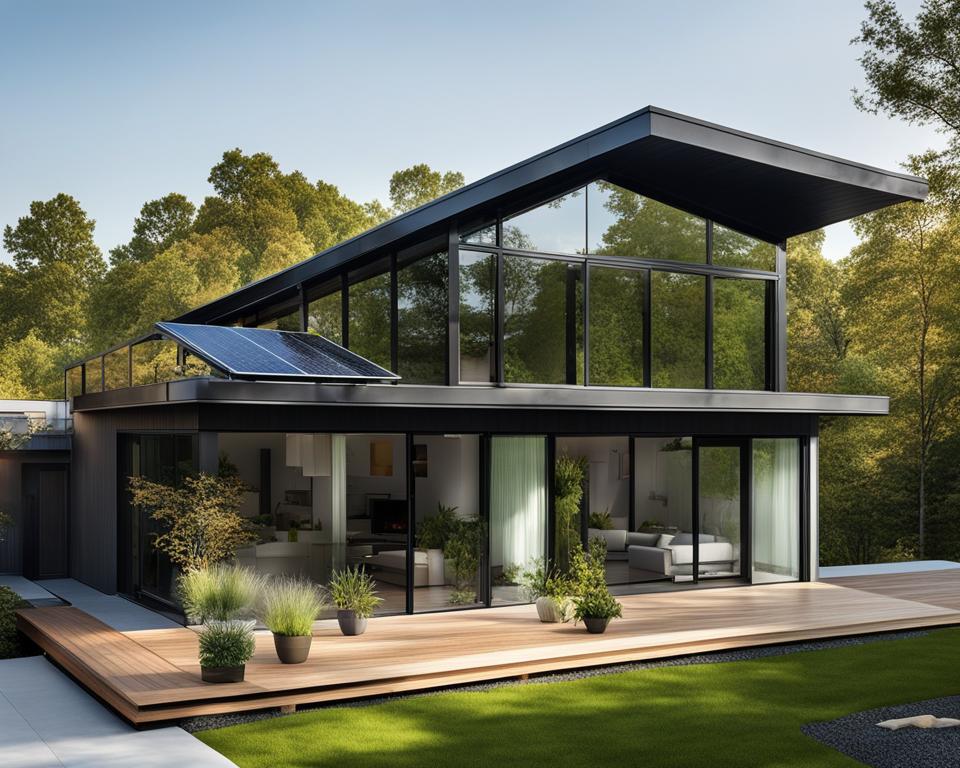Summer is here, and as temperatures rise, so do your energy bills. But did you know that efficient cooling can help you save on energy costs while keeping your home cool and comfortable? By investing in energy-efficient cooling solutions and cost-effective cooling systems, you can optimize your home’s cooling efficiency while minimizing your environmental impact.
In this guide, we’ll explore the best practices for efficient cooling, sustainable cooling options, and how to maximize your cooling efficiency without sacrificing comfort. Read on to discover how you can unlock significant summer energy savings and beat the heat.
When it comes to cooling your home, there are many eco-friendly cooling options available that not only provide efficient cooling but also contribute to a more sustainable environment. By incorporating sustainable cooling technology into your routine, you can help reduce your carbon footprint and make a positive impact on the planet.
Some of the most popular eco-friendly cooling options include:
| Eco-Friendly Cooling Options | Description |
|---|---|
| Smart thermostats | These thermostats learn your cooling preferences and automatically adjust the temperature to optimize energy savings. |
| Ceiling fans | They provide a cost-effective way to circulate cool air and reduce the need for air conditioning. |
| Geothermal cooling systems | These systems use the stable temperature of the ground to provide year-round cooling with minimal energy consumption. |
| Heat-reflective window film | It reflects the sun’s rays to prevent heat from entering your home, reducing the need for air conditioning. |
By embracing sustainable cooling options like these, you can enjoy efficient cooling while reducing your impact on the environment. Small changes can lead to significant and positive results!

To ensure optimal cooling with energy-efficient cooling solutions and save on energy costs, follow these efficient cooling tips:
Try out these energy-saving cooling techniques and efficient cooling practices to maximize your cooling efficiency and save on energy costs. With these tips, you can ensure a comfortable summer without breaking the bank on energy expenses.
Congratulations on taking the first step towards achieving high-efficiency cooling in your home. By implementing the strategies and techniques outlined in this guide, you can maximize your energy savings and reduce your environmental impact.
Remember to choose high-efficiency cooling products that are designed to provide optimal performance while minimizing energy consumption. Whether you opt for a smart thermostat or a high-efficiency air conditioner, the right cooling equipment can make all the difference in your energy bill.
By embracing eco-friendly and sustainable cooling practices, you can enjoy a cool and comfortable summer while doing your part for the planet. So start exploring your options today and make the most of your cooling system!
Efficient cooling is important during the summer season as it helps maintain a comfortable indoor temperature while reducing energy costs. By optimizing the performance of your cooling system, you can create a cool and pleasant environment without excessive energy consumption.
There are several energy-efficient cooling solutions available in the market. These include programmable thermostats that allow you to set temperature schedules, energy-saving ceiling fans, evaporative coolers that use water evaporation for cooling, and high-efficiency air conditioners that use advanced technology to consume less energy while delivering effective cooling.
To choose cost-effective cooling systems, consider factors such as the size and layout of your space, energy efficiency ratings, and overall cooling needs. It’s important to choose a system that is suitable for your specific requirements to maximize energy savings and avoid unnecessary expenses.
Eco-friendly cooling options include utilizing natural ventilation, such as opening windows during cool evenings, installing energy-efficient windows and doors to minimize heat transfer, using reflective roofing materials to reduce heat absorption, and incorporating green roof systems that provide natural insulation and cooling benefits.
Sustainable cooling technology focuses on reducing energy consumption and utilizing renewable energy sources, such as solar power. By embracing sustainable cooling technology, you can minimize carbon emissions and help combat climate change while still achieving effective cooling and comfort.
To maximize cooling efficiency, you can set your thermostat to the optimal temperature range, use ceiling fans to enhance air circulation, keep windows and doors properly sealed to prevent air leaks, minimize heat-generating activities during peak hours, and regularly clean and maintain your cooling equipment for optimal performance.
There are several energy-saving cooling techniques you can implement. These include using natural ventilation whenever possible, utilizing blackout curtains or blinds to reduce heat gain from sunlight, avoiding excessive cooling by setting your thermostat at a slightly higher temperature and considering zone cooling options to cool specific areas rather than the entire space.
Efficient cooling practices involve using your cooling system wisely and making small adjustments to optimize its efficiency. For example, placing heat-generating appliances away from the thermostat, closing curtains or blinds during the hottest part of the day, and using programmable thermostats to regulate cooling based on occupancy patterns can all contribute to more efficient cooling.
High-efficiency cooling products consume less energy while delivering effective cooling performance. By choosing high-efficiency cooling products, you not only save on energy costs but also contribute to reducing greenhouse gas emissions and supporting a sustainable future.